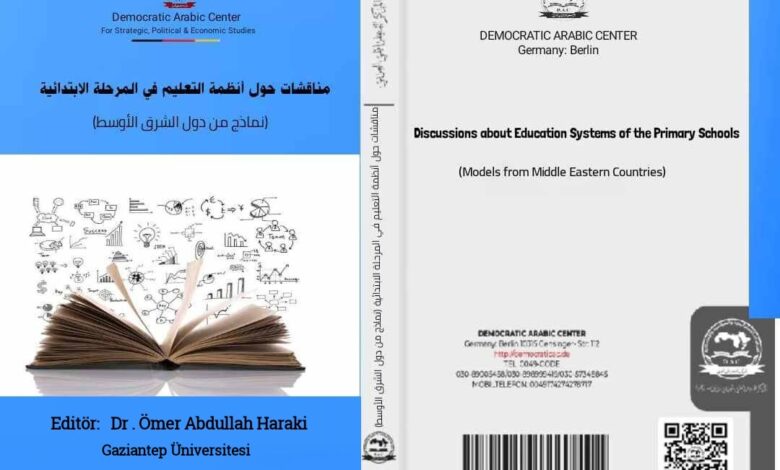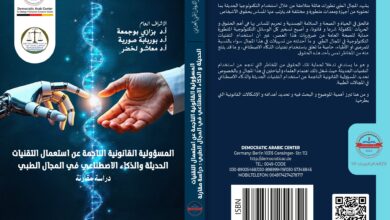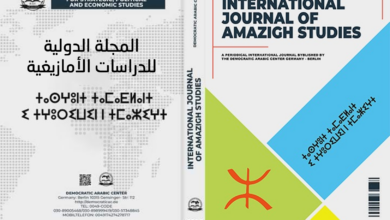مناقشات حول أنظمة التعليم في المرحلة الابتدائية نماذج من دول الشرق الأوسط
Discussions about Education Systems of the Primary Schools - Models from Middle Eastern Countries

تأليف : د. عمر عبد الله الحراكي – Editör : Dr . Ömer Abdullah Haraki
نسخة “pdf”-
مناقشات حول أنظمة التعليم في المرحلة الابتدائية نماذج من دول الشرق الأوسط
الطبعة الأولى “2024″ –من كتاب: –
مناقشات حول أنظمة التعليم في المرحلة الابتدائية نماذج من دول الشرق الأوسط
جميع حقوق الطبع محفوظة #المركز_الديمقراطي_العربي ولا يسمح بإعادة إصدار هذا الكتاب أو اي جزء منه أو تخزينه في نطاق إستعادة المعلومات أو نقله بأي شكل من الأشكال، دون إذن مسبق خطي من الناشر .
تقديم :
يُركز هذا الكتاب حول تقصّي ومناقشة أنظمة التعليم في المرحلة الإبتدائية من خلال عمل مقارنات لبعض النماذج المُختارة من دول الشرق الأوسط، وتم التركيز على خمسة دول هي سوريا والمملكة العربية السعودية ومصر وتركيا وإيران. ووفقاً عليه تم إجراء مناقشات موسّعة حول أنظمة التعليم المتعلقة بالمرحلة الإبتدائية،بناءاً على فحص الوثائق المتعلقة بأنظمة التعليم في تلك الدول والبيانات الرسمية الصادرة عن المؤسسات الرسمية فيها. كما تضمنت محاور الكتاب تقصي عمليات التطوير التي أجرتها هذه الدول على أنظمتها التعليمية خلال السنوات الأخيرة. كما يغطي الكتاب بشكل رئيسي أربع محاور أساسية في العملية التعليمية وهي: هيكل الإدارة التعليمية، برامج التعلّم والتعليم، والظروف البيئية للمدرسة الإبتدائية. حيث تضمن المحور الأول للكتاب هيكلة الإدارة التعليمية وما تُبنى عليه من أيدولوجيا التعليم وسياساته ونمط الإدارة وهيكلة المؤسسات الإدارية وشكل الإنفاق وحجمه؛ بالاضافة إلى أنواع المدارس الإبتدائية الموجودة في كل بلد، وهيكلة الإدارة المدرسية.علاوة على ذلك تطرق هذا المحورلمناقشة تفاصيل الحياة المدرسية وما يتعلق بها من قوانين وضوابط وأنظمة القبول والإلتحاق بالمدرسة الإبتدائية وسير العمليات داخل المدرسة.إضافة إلى ذلك حجم القطّاع الخاص في مرحلة التعليم الإبتدائي في كل دولة وتأثيره في النظام التعليمي. بينما يُناقشالمحور الثاني: برامج التعليم التي تنفذها كل دولة من حيث هيكلة برامج التعليم وطبيعة المحتوى وفلسفته وأهدافه وأسسه؛بالإضافة إلى البرامج والمشاريع المُنفذة من قبل كل دولة في قطاع التعليم،والإستراتيجيات وطرق التدريس التي تتبعها كل دولة في نظام التعليم المتعلق بها. كما تُركّز مناقشات هذا المحورحولرسم الخطط الدراسية وتطبيق المحتوى الدراسي وآلية تنفيذ البرنامج الدراسي.بينما يغطي المحور الثالث من الكتاب الظروف البيئية في مدارس التعليم الإبتدائي والظروف المحيطة بالطالب وكل ما يُؤثر على سلامة وصحة الطالب وسير العملية التعليمية من خلال إجراءات مقارنات بين الدول محور الكتاب ومناقشة هذه الظروف ومسبباتها ونشأتها.ويغطي هذا المحور من خلال المقارنات التي تم إجراؤها على عناصر الأمن والسلامة العامة المتوفرة في المدارس الإبتدائية في كل دولة، إضافة إلى شروط الصحة العامة والشروط المتعلقة بتصميم المباني المدرسية والظروف المتعلقة بجماليات البيئة المدرسية وتنظيمها،والعوامل المحيطة التي تؤثر على نفسية الطفل ورغبته في التعلم. كما تضمّن هذا المحور ظروف البيئة المدرسية المتعلقة بالخدمات العامة ومدى توافرها داخل المدارس الإبتدائية، كالحدائق والمرافق ودورات المياه والوسائل التعليمية والأدوات والتجهيزات المدرسية. بينما يغطيالمحور الرابع من الكتاب نُظم القياس والتقويم المُطبقة في كل بلد، بالإضافة إلىالمقارنات والمناقشات المتعلقة بسياسات نُظم التقويم التي ترسمها كل دولة وأنماط التقويم وطرقه وأساليبه وإستراتيجياته التي تسعى كل دولة لتضمينها في نظامها التعليمي؛ بالإضافة إلى العملية التي يتم من خلالها قياس قدرات الطالب ومتابعة أعماله وأنشطتهخلال العام الدراسي وتقييمها. كما يتطرّق هذا المحور إلى كيفية تنفيذ عملية القياس والتقويم ومراحلهاوأدواتها ودور الطالب والمعلم فيها ويشمل أيضاً طرق قياس مؤشر أداء الطالب حتى الوصول إلى التقييم النهائي له من خلال مؤشر رقمي أو كتابي وصفي أو الجمع بينهما.ّكما يركز الكاتب من خلال إجراء مناقشة عامة تشمل محاور الكتاب مجتمعة على دور العوامل المتداخلة في المنطقة وأثرها على النظام التعليمي بشكل عام.
Editör : Dr . Ömer Abdullah Haraki
Abstract
The book focuses on the investigation and discussions of education systems in primary schools by comparisons of some selected models from middle east countries. These countries are Syria, Saudi Arabia, Egypt, Turkey and Iran. In addition to collecting official data from formal education institutions, extensive discussions have taken place about the education systems of primary schools based on checking documents. Also, the book’s axes included an investigation of the development processes undertaken by these countries on their educational systems in recent years. The book covers four main axes of the educational system: as a structure of educational administration, learning and teaching programs, environmental conditions, and assessment methods of primary schools. The first axis of the book discusses the structure of the educational administration, education policy and ideology, and types of primary schools.Moreover, this axis discussed the details of school life, laws, regulations and regulations for admission and enrollment in primary school and the functioning of operations within the school. In addition. The size of the private sector in primary schools and its impact on the educational system.While the second axis discusses the education programs implemented by each country in terms of structuring education programs, the nature of the content, its philosophy, objectives and foundations. In addition to the programs and projects that implemented by each country in the education sector, and the strategies and teaching methods that each country follows in its related education system.The discussions in this axis also focus on drawing up study plans, applying the course content, and the mechanism for implementing the study programme.While the third axis of the book covers the environmental conditions at primary schools, the conditions surrounding the student and everything that affects the safety and health of the student and the progress of the educational process through comparison procedures between countries.This axis covers, through comparisons made, the elements of security and public safety available at primary schools in each country, in addition to the conditions of public health, the factors related to the design of school buildings, aesthetics and organization of the school environment, and all factors that affect the child’s psyche and desire to learn.This part also included the conditions of the school environment related to public services and their availability within primary schools, such as gardens, utilities, toilets, educational aids, tools and school equipment.While the fourth axis of the book covers the measurement and assessment systems applied in each country through the extended investigation into this system. So, the author tried to shed light on the policies, patterns, methods and strategies of assessment by indicating comparisons and discussions related to each part of the axis. The author also tried to describe the student assessment process roughly.This section discusses how to implement the measurement and assessment process, and what is the used stages and tools in these systems, also, what the role of the student and teacher in it. It also includes methods for measuring the student’s performance indicator until reaching the final assessment through a numerical or written descriptive scale or a combination of both.The author also focuses on a general discussion that includes the book’s axes collectively on the role of the intertwined factors in the region and their impact on the educational system in general.
الناشر: المركـز الديمقراطي العربي للدراسات الاستراتيجية والسياسية والاقتصادية – ألمانيا – برلين
Democratic Arabic Center- Berlin – Germany





